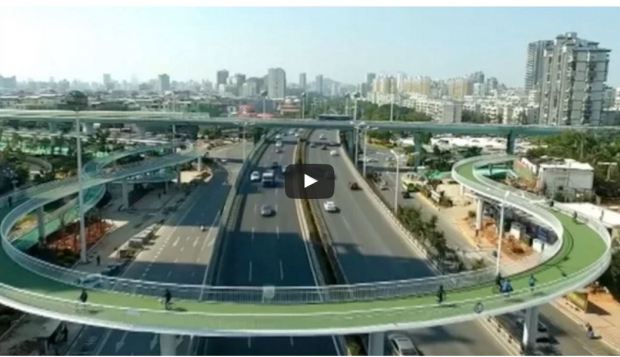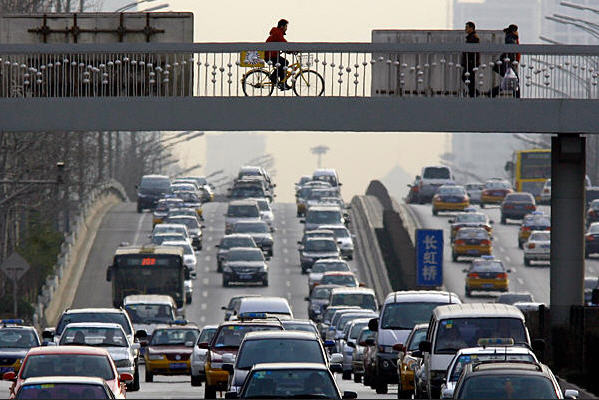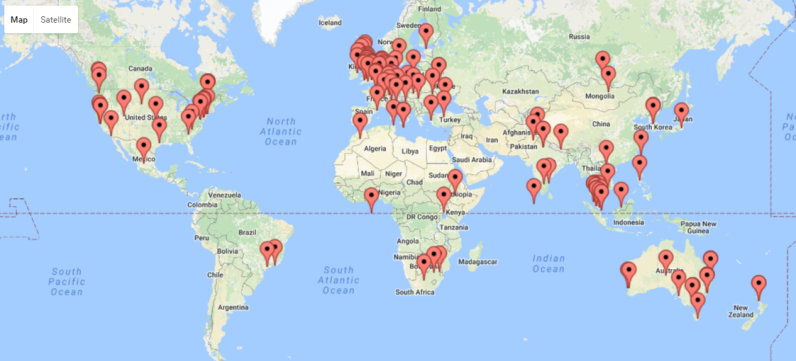
With one eye to laying the base for our work and collaborative programs , we are currently in the process of updating and extending this list of distinguished international colleagues, each of whom is hard at work day after day on challenges, projects and programs, alone and with others, all in support of the principles of sustainable development and equity, in cities and countries around the world. It is our intention to have the revised and expanded version of this panel listing online by end May 2019, as part of our celebration of the first ten years of our collaborative work in support of World Streets.
Since our work program is being totally shifted to the the challenge of achieving sharp near-term decreases in gases causing global warming — CO2, CH4, N2O, PFCs, etc., — and in particular those emanating from the local mobility sector, we hope to encourage shorter or longer contributions from the members of our advisory panel on this critical topic
The revised version of this posting (end April 2020) will include some explanatory materials to clarify the process by which this “New Mobility Majority” is in the process of overtaking the old attitudes, approaches and policies which have been largely responsible for our gross under-performance in the sector, all the more important as the 21st century noose tightens in terms of climate, local environment, energy supply, scarce resources, the economy, congestion, poor service quality for the majority, and the long list goes on. (In the meantime we want to hear from you with your ideas and outstanding nominations for the panel. And if you spot errors or omissions on the following or anywhere in our work, yes please do get in touch and let us know.)



 Sarkissian and Lori Mooren reflects on the death in a road crash of Wendy’s husband and puts this dreadful experience in a wider context of how we should deal with eliminating death and injury on the roads and how we should improve our ability to react to tragedies of this kind. At a time when 3 cyclists this year (January and February 2017) have been killed in London (see reference list) we are even more acutely aware than ever that these horrific tragedies are not interrogated systematically and thoroughly and not translated into immediate action to get the chances of death and serious injury as near to zero as we can.
Sarkissian and Lori Mooren reflects on the death in a road crash of Wendy’s husband and puts this dreadful experience in a wider context of how we should deal with eliminating death and injury on the roads and how we should improve our ability to react to tragedies of this kind. At a time when 3 cyclists this year (January and February 2017) have been killed in London (see reference list) we are even more acutely aware than ever that these horrific tragedies are not interrogated systematically and thoroughly and not translated into immediate action to get the chances of death and serious injury as near to zero as we can.



 For the past couple of decades, a small group of thinkers, calling themselves variously ecological economists, degrowthers, and voluntary simplifiers, has undertaken a seemingly quixotic quest against the global obsession with growth for its own sake. They question the idea that increased gross domestic product will invariably help all people regardless of social standing, and question even more the environmental sustainability of limitless growth. A new book,
For the past couple of decades, a small group of thinkers, calling themselves variously ecological economists, degrowthers, and voluntary simplifiers, has undertaken a seemingly quixotic quest against the global obsession with growth for its own sake. They question the idea that increased gross domestic product will invariably help all people regardless of social standing, and question even more the environmental sustainability of limitless growth. A new book, 




 What do the 4,448 readers (today) turn to when they check into Word Streets in the morning? It never fails to surprise us. The variety of choice is enormous, and it often happens that articles which we consider minor if still interesting suddenly take off, because it turns out that our readers make up their own minds for their own reasons. Take the most read posting over the last half-dozen years for example —
What do the 4,448 readers (today) turn to when they check into Word Streets in the morning? It never fails to surprise us. The variety of choice is enormous, and it often happens that articles which we consider minor if still interesting suddenly take off, because it turns out that our readers make up their own minds for their own reasons. Take the most read posting over the last half-dozen years for example — 

 This issue of WTPP reminds us that India has been in the news a lot in recent months mainly for its poor air quality, deaths and injuries on the roads and the serious damage this does to quality of life, family life and the economy. In the 23 years of World Transport Policy & Practice (WTPP) we have not carried enough material by Indian authors and want to use this editorial to encourage more submissions from that country.
This issue of WTPP reminds us that India has been in the news a lot in recent months mainly for its poor air quality, deaths and injuries on the roads and the serious damage this does to quality of life, family life and the economy. In the 23 years of World Transport Policy & Practice (WTPP) we have not carried enough material by Indian authors and want to use this editorial to encourage more submissions from that country.